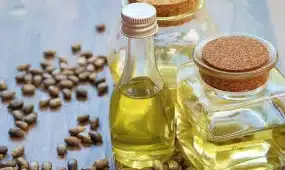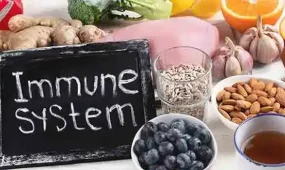What Is Cinnamon?
Cinnamon, originating from the bark of several tree species, is a spice cherished for its aromatic flavor and medicinal properties. Its distinct sweet and spicy taste elevates both sweet and savory dishes, while its historical use in traditional medicine highlights its enduring cultural importance and potential health benefits.
We spoke to dietitian Trista Best. She told us that, True cinnamon (ceylon cinnamon) is anti-inflammatory and there are many studies that support this fact. Chronic, low-level inflammation causes oxidative stress in the body that leads to many of the chronic conditions common to Western nations. The most common of these conditions caused and / or exacerbated by inflammation include heart disease, obesity, and diabetes.
Embraced in local cafes and bakeries, cinnamon’s deep mellow flavor and distinct aroma are ubiquitous. Personally, homemade Chai tea featuring cinnamon remains a seasonal favorite, evoking cozy kitchen memories with its delightful aroma.
Types of Cinnamon
Have you ever wondered how many types of cinnamon there are? Well, cinnamon isn’t just a one-size-fits-all spice. In fact, there are several varieties, each with its own unique flavor and characteristics. Let’s explore the wonderful world of cinnamon!
1. Cinnamomum verum (Ceylon Cinnamon): Ceylon Cinnamon, also known as true cinnamon. It hails from Sri Lanka and Southern India, but you can also find it in Mexico and East Africa. Ceylon cinnamon has a softer texture compared to other types and offers a more herbal and savory flavor profile. It’s perfect for adding a subtle sweetness to your dishes without overpowering them.
2. Cinnamomum burmannii (Korintje Cinnamon): It is sometimes called Korintje cinnamon. This variety is milder in flavor and is quite popular in America, where it makes up a significant portion of cinnamon imports. Known for its versatility, Korintje cinnamon can be used in a wide range of recipes, from baked goods to savory dishes, adding a touch of warmth and aroma.
3. Cinnamomum cassia (Saigon Cinnamon): Often mistaken for true Saigon cinnamon but typically Cinnamomum cassia. Originating from Southeast Asia, particularly Vietnam, Saigon cinnamon is sweeter and less spicy than other types. It’s commonly found in supermarkets and is great for adding a hint of sweetness to desserts and beverages.
4. Cinnamomum loureiroi (Royal Cinnamon): It is also known as Cinnamomum loureiroi. This variety is a bit harder to come by but is worth seeking out. Grown primarily in central Vietnam, Royal cinnamon is known for its intense sweetness and spiciness, giving your dishes a flavor boost like no other. Its name even hints at its historical association with royal courts!
Well, these four main varieties – Ceylon, Korintje, Saigon (often cassia), and Royal – offer a diverse range of flavors and aromas to elevate your culinary creations. Whether you’re baking, cooking, or simply enjoying a warm cup of cinnamon-spiced tea, there’s cinnamon out there to suit your taste buds.
Health Benefits of Cinnamon
Antioxidant Power: According to Evidence-Based Complementary and Alternative Medicine, Cinnamon is rich in polyphenols, serving as powerful antioxidants that combat oxidative stress and inflammation in the body, potentially reducing the risk of chronic diseases.[1]
Heart Health: Studies suggest that cinnamon may contribute to lower levels of cholesterol and triglycerides, thereby supporting heart health and reducing the risk of heart disease.[2]
Blood Sugar Management: As seen in Journal of Diabetes Science and Technology Cinnamon has been shown to improve insulin sensitivity, regulate blood sugar levels, and reduce the risk of diabetes-related complications, making it beneficial for individuals with diabetes or insulin resistance.[3]
Anti-inflammatory Properties: Research has shown that Cinnamon possesses anti-inflammatory properties, which can help prevent chronic inflammation and associated diseases.[4]
Neurodegenerative Disease Protection: Components of cinnamon have shown potential in inhibiting the buildup of tau protein in the brain, which is associated with neurodegenerative diseases like Alzheimer’s, suggesting a possible role in protecting against such conditions.
Bacterial and Fungal Infection Prevention: Cinnamon’s active compound, cinnamaldehyde, has antimicrobial properties that may help prevent bacterial and fungal infections, particularly in the respiratory tract.
Weight Management: Some studies suggest that cinnamon may aid in weight loss by boosting metabolism, although further research is necessary to confirm this effect conclusively.[5]
Incorporating cinnamon into your diet may offer various health benefits, but it’s essential to consume it as part of a balanced diet and healthy lifestyle for optimal results.
Which Type of Cinnamon is Healthiest?
Ceylon cinnamon is the best choice for those who want to eat cinnamon for its health benefits since it is much lower in coumarin than cassia cinnamon. Coumarin is a compound that occurs in high levels in cassia cinnamon and, in large quantities, is harmful to the liver and can cause serious health problems.
If you want to take advantage of cinnamon’s blood-sugar benefits without the potential risk of coumarin, stick with Ceylon. This type of cinnamon also offers health-promoting polyphenols.
Side Effects of Cinnamon
We talked to Dr. Kevin Huffman, who founded American Bariatric Consultants, to find out what could make these cinnamon risky. He explained that, though cinnamon is generally safe when used as a spice in foods, side effects can potentially occur from eating large amounts of cinnamon or taking cinnamon-containing supplements on a regular basis.
Liver damage is a possible concern, especially because of its coumarin content: high doses of cinnamon (specifically, large amounts of cassia cinnamon) may cause liver problems.
One of the many side effects of cinnamon – both the dried and the liquid form – is allergic reactions, including mouth sores, swelling and even difficulty breathing (allergies to spices such as cinnamon can happen to anyone, but are slightly more common in children than adults).
Cinnamon can also cause irritation to the mouth or the skin, particularly in people with sensitive mouths or skin.
Another possible side effect of this spice is its blood sugar-lowering effects (which is beneficial for people with diabetes), but hypoglycemia can occur when regular high doses are consumed by people who take medications that also lower blood sugar levels.
Large quantities of the spice are also a potential cause of digestion problems, such as diarrhea, nausea and stomach upset.
Powerful Oil
That familiar smell and flavor come from an oil called cinnamaldehyde. This oil is actually bottled as an essential oil. It is an ancient oil known for numerous health benefits.[6]
As our culture looks for healthier options personalizing health, the popularity and knowledge of using essential oils are on the rise.
Major essential oil companies all have their own special brand of cinnamon oil or an oil blend using cinnamon.
Cinnamon essential oil is known as a natural health remedy. It is commonly used for limiting the duration of a cold and soothing a sore throat. The warm brown spice is packed with antiviral, antibacterial, and anti-fungal properties.
It is interesting to note that Cinnamon Essential Oil can be attained from either the tree’s outer bark or its leaves. The two main varieties are:
- Cinnamon Bark Essential Oil
- Cinnamon Leaf Essential Oil
Using a diffuser is a wonderful way to use this warm spicy oil. Breathing the oil is known as aromatherapy. This can diminish feelings of depression, faintness, and exhaustion. This oil is known to boost immunity.
Did you know that you can also use cinnamon oil to nourish the skin, slow the look of aging, and boost overall skin tone?
Storing of Cinnamon
The sticks should be stored in a glass container and kept in the refrigerator for the best level of freshness. The cool dark place preserves the quality of the bark. Make sure the lid is secured tightly, eliminating moisture.
For optimal shelf life, fresh ground cinnamon can be kept either in the freezer or the refrigerator. It can be kept up to about 6 months in a cupboard without refrigeration. The best source of freshness is, of course, your nose!
Final Thought
Lastly, note that it was highly valued by ancient cultures. The Egyptians, Arabs, Chinese, and Ayurvedic medicine practitioners throughout the world have used it for thousands of years.
Whether in the extract, oil, tea, or herb, it has provided people with a wide range of natural culinary and health applications for centuries.
Go ahead, enjoy your favorite cinnamon craving today!
Sources
Health Insiders relies on peer-reviewed studies, academic research institutions, and medical associations. We avoid using tertiary references. You can learn more about how we ensure our content is accurate and current by reading our editorial policy.
[1] Rao PV, Gan SH. Cinnamon: a multifaceted medicinal plant. Evid Based Complement Alternat Med. 2014;2014:642942. doi: 10.1155/2014/642942. Epub 2014 Apr 10. PMID: 24817901; PMCID: PMC4003790
[2] Mousavi SM, Rahmani J, Kord-Varkaneh H, Sheikhi A, Larijani B, Esmaillzadeh A. Cinnamon supplementation positively affects obesity: A systematic review and dose-response meta-analysis of randomized controlled trials. Clin Nutr. 2020 Jan;39(1):123-133. doi: 10.1016/j.clnu.2019.02.017. Epub 2019 Feb 15. PMID: 30799194
[3] Qin B, Panickar KS, Anderson RA. Cinnamon: potential role in the prevention of insulin resistance, metabolic syndrome, and type 2 diabetes. J Diabetes Sci Technol. 2010 May 1;4(3):685-93. doi: 10.1177/193229681000400324. PMID: 20513336; PMCID: PMC2901047
[4] Kawatra P, Rajagopalan R. Cinnamon: Mystic powers of a minute ingredient. Pharmacognosy Res. 2015 Jun;7(Suppl 1):S1-6. doi: 10.4103/0974-8490.157990. PMID: 26109781; PMCID: PMC4466762
[5] Mousavi SM, Rahmani J, Kord-Varkaneh H, Sheikhi A, Larijani B, Esmaillzadeh A. Cinnamon supplementation positively affects obesity: A systematic review and dose-response meta-analysis of randomized controlled trials. Clin Nutr. 2020 Jan;39(1):123-133. doi: 10.1016/j.clnu.2019.02.017. Epub 2019 Feb 15. PMID: 30799194







 This article changed my life!
This article changed my life! This article was informative.
This article was informative. I have a medical question.
I have a medical question. Ask a Question
Ask a Question
 This article contains incorrect information.
This article contains incorrect information. This article doesn’t have the information I’m looking for.
This article doesn’t have the information I’m looking for.